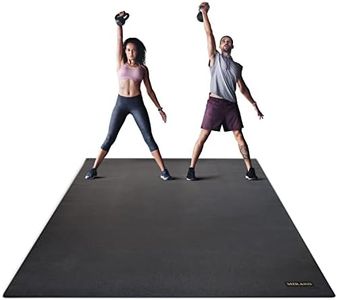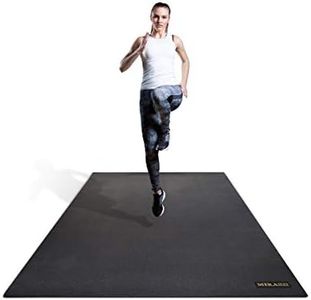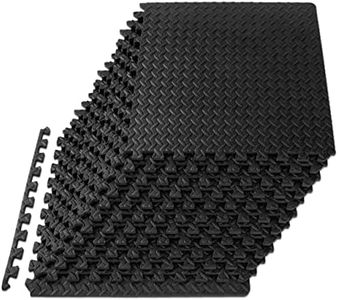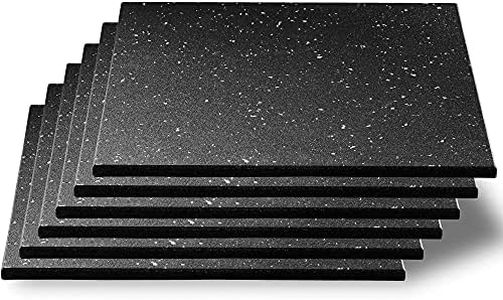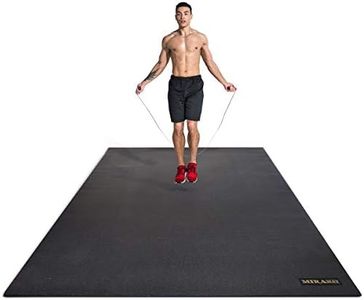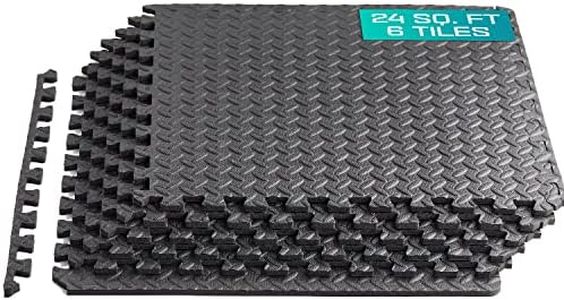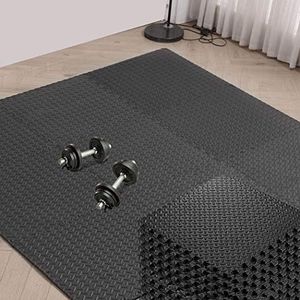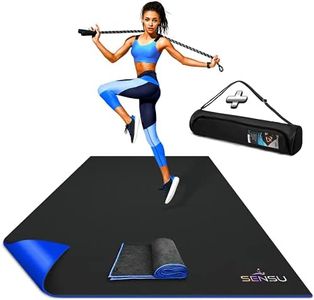We Use CookiesWe use cookies to enhance the security, performance,
functionality and for analytical and promotional activities. By continuing to browse this site you
are agreeing to our privacy policy
10 Best Gym Flooring For Carpet
From leading brands and best sellers available on the web.Buying Guide for the Best Gym Flooring For Carpet
Choosing gym flooring to be placed over carpet is a bit different from picking standard gym mats. The goal is to provide a stable and safe surface for exercise, especially since carpet can be uneven or squishy. By understanding the key specs, you can select flooring that offers stability, protects your carpet, and matches the types of workouts you prefer.ThicknessThickness measures how deep or 'cushiony' the flooring is, and it's important for both comfort and support. Thin flooring (under 1/4 inch) may not fully stabilize your workout, especially on soft carpets, so it’s best for very low-impact activities. Medium thickness (around 1/4 to 1/2 inch) can handle most bodyweight workouts and some weights, offering a good balance of firmness and comfort. Thick flooring (over 1/2 inch) is ideal for heavy lifting or plyometrics because it adds extra stability and shock absorption, but it can feel bulky underfoot. Choose a thickness based on the workouts you plan to do most often – lighter workouts can use thinner mats, while more intense and high-impact routines may need something thicker.
MaterialThe type of material used affects the grip, comfort, and durability of the gym flooring. Foam tiles are lightweight and soft, making them comfortable for floor exercises, but on carpet they might move around or compress too much. Rubber flooring is heavier and less likely to slip or shift, giving a firmer surface for stable footing. Vinyl is easy to clean and water-resistant but may be less cushioned. Pick a material based on the stability you need and the intensity of your workouts; for most users, rubber or a heavy-duty foam with anti-slip backing will be the best bet over carpet.
Interlocking or Roll-out DesignGym flooring can come as interlocking tiles or as large roll-out mats. Interlocking tiles are like puzzle pieces, making them easy to install and expand or move, but on carpet, they can sometimes pull apart if not properly anchored. Roll-out mats form a larger, single piece, so they usually stay put better over carpet. Consider how often you’ll need to move the flooring or change your setup – if you want a permanent, unmoving base, a roll-out may be better; if you want flexibility, interlocking tiles are more versatile.
Surface TextureSurface texture determines how grippy or slippery the gym flooring feels. A smooth surface is easy to clean but may be slippery when wet or if you sweat a lot. A lightly textured or ridged surface offers better grip for shoes and for stationary exercises like planks or pushups. If your workouts are dynamic or involve jumping, a textured surface adds safety. Choose a texture that feels good for your usual workouts and prevents slipping.
Size and CoverageSize and coverage mean how much area your gym flooring covers. Smaller mats can be good for targeted areas (like under a treadmill), while larger setups can give you space to move around freely. Make sure to measure your workout space and consider whether you want full-room coverage or just a small exercise zone. Picking the right size ensures you aren’t working half on and half off the mat, which could be unsafe or uncomfortable.

